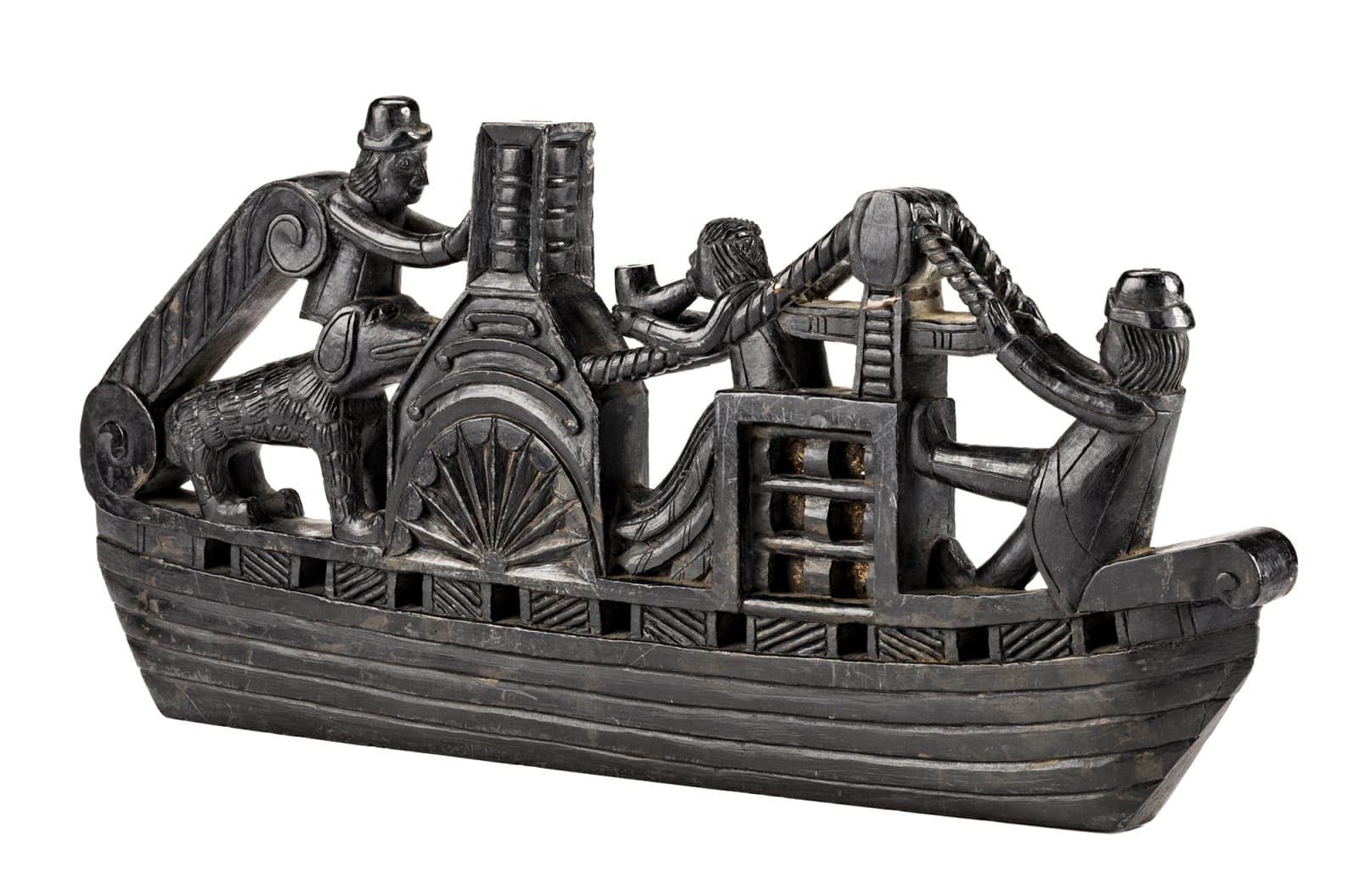UNIDENTIFIED ARTIST, HAIDA
unsigned.
LOT 17
ESTIMATE: $20,000 — $30,000
Further images
Once argillite was identified as a versatile material from which to make small objects for sale to the crews on trading ships that came to the Northwest Coast in the early nineteenth century, a range of styles and subjects developed over time. Some were handheld figures that could be smoked as pipes, others were sculpturally decorated pipes with Haida figures, some were compact groups of overlapping and interlocking characters from Haida mythology, and some were sculptural parodies of non-Haida people and occupations, particularly the personalities and occupations of the seamen who were their prime consumers. Some of the so-called pipes were that in name only, and not able to be efficiently smoked, though possessing a minimal bowl and drilled-through stem.
One of the pipe styles that became popular with seamen was the ship pipe: a parody of Euro-American vessels and the seamen themselves in a thin, deep-relief panel with many piercings. This example is built upon the ship, the planking of the hull and rigging. Square gaps in the space between deck and rail are spaced between rope-bound areas, with the steam boiler and its stack and paddle wheel standing above them. Three seamen and a dog stand between bits of rope and rigging in awkward positions, one of them smoking a pipe. The men’s strange (to the Haida) hats, hair, and clothing are well detailed, as is the thick coat of the dog. A large square element seems to be a windowed cabin warmed with fire, suggested by bits of hammered copper sheet visible through the window panes.
Steven C. Brown
Steamships began plying the waters of the Northwest Coast in the 1830s. The first such ship, the Hudson’s Bay Company S.S. Beaver, operated between 1836 and 1888. A sidewheel steamer with Brigantine sails, she must have been quite the strange sight to Haida eyes. The great majority of ship panel pipes depict ships from the gunwale up; this example is unusual in that it depicts the entire ship including its wooden hull. Ship panel pipes were never “anatomically correct,” and Haida carvers used great artistic license in their portrayals of these exotic boats.
Literature: For a discussion of Haida ship panel pipes and illustrations see Peter L. Macnair and Alan J. Hoover, The Magic Leaves: A History of Haida Argillite Carving (Victoria: Royal BC Museum, 1984/2002), pp. 39-51. See also Leslie Drew and Douglas Wilson, Argillite: Art of the Haida (Vancouver: Hancock House, 1980), pp. 82-85, 163, 174-183. See also Thomas Vaughan and Bill Holm, Soft Gold: The Fur Trade & Cultural Exchange on the Northwest Coast of America, pp. 137-139.
Provenance
Private Collection, Vancouver.Join our mailing list
* denotes required fields
We will process the personal data you have supplied in accordance with our privacy policy (available on request). You can unsubscribe or change your preferences at any time by clicking the link in our emails.












